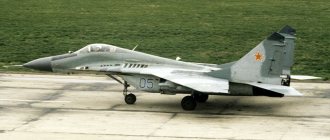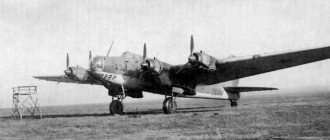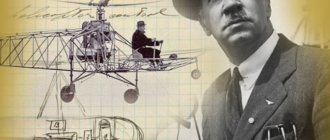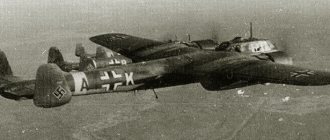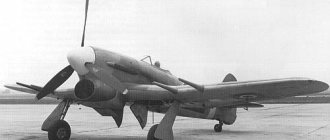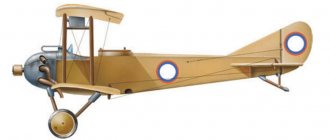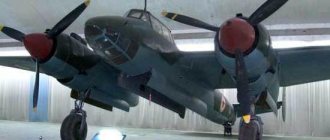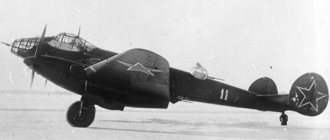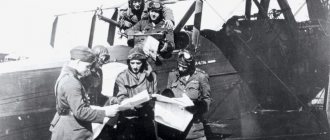Su-37 fighter in flight. There are bombs suspended on the underwing units, and R-73 missiles on the wing tips. Not all aircraft, even the most promising ones, managed to go from prototype to production model. The Su 37 fighter, whose “biography” turned out to be, although bright, but very short, was also unable to overcome this distance. Perhaps, if it were not for the total collapse of industry in the “dashing nineties”, everything would have turned out differently, but now it is no longer possible to change anything. However, although this aircraft no longer exists, a certain technical “heritage” remains from it, which, undoubtedly, will be actively used by aircraft designers when developing new aircraft.
History of the development of the Su-37 Terminator multirole fighter
In the 80s of the last century, work began almost simultaneously on the creation of fifth-generation fighters in the Soviet Union and the United States of America. These new aircraft had to have at least three key characteristics:
- A minimal reflective surface, allowing you to “hide” from enemy radars and “confuse” guided missiles;
- Cruising supersonic flight speed;
- Super maneuverability, making it possible to instantly turn the aircraft around.
From the very beginning, it was quite clear that creating a car with such performance characteristics would be an extremely difficult task. And if the designers of the Moscow Machine-Building Plant named after A.I. Mikoyan began to solve it immediately, which later led to the creation of the MiG 1.44 prototype, while Sukhoi’s experimental design bureau preferred to go step by step, developing new technologies one after another.
Su-27M (aka Su-35) is an aircraft extremely close in design to the Su-37
As part of this approach, by 1988, an experimental aircraft was built, called the Su-27M. Even for people far from aviation, it was easy to notice its difference from the base model - the fighter had a front horizontal tail, similar to small “additional” wings. This aerodynamic design provided a noticeable improvement in maneuvering characteristics.
The “original” Su-27 was already quite rightly considered the best aircraft in the world according to this criterion, but Soviet aircraft designers did not intend to rest on their laurels.
Subsequently, the Su-27M was often designated as the Su-35, which can cause misunderstandings, since the modern Su-35 is a completely different machine.
The next step in the development of the aircraft was equipping it with engines with thrust vector control (TCV). Such a power plant gives the fighter the ability to literally “turn around on the spot” and perform aerobatic maneuvers that are impossible for almost any other aircraft.
The Su-27M, equipped with a power plant with ultraviolet fuel, received the designation Su-37, and was subsequently known by this name. This super-maneuverable fighter was built in 1993 in just one copy. Unfortunately, the Russian Air Force at that time could not even dream of purchasing new aircraft. At the end of 2002, the aircraft died during a test flight, which led to the final closure of the program to create it.
History of creation
Since the mid-80s, the new heavy fighter Su-27 began to be used in Soviet military aviation. While the pilots were mastering the machine, the designers were already working on its further improvement.
In the second half of the decade, the Su-33 carrier-based fighter, the Su-34 bomber, and the improved Su-27M fighter, which later changed its designation to “Su-35,” took to the air.
The first prototype aircraft were rebuilt from production Su-27 copies, and only the eighth copy became the first Su-35 built from scratch.
The eleventh aircraft (the fourth in the pre-production batch) played a special role. The fighter with the factory designation T-10M-11 and tail number 711 went to Moscow for completion.
After installing new engines and equipment on it, it became a unique “Terminator” with the index Su-37.
Description of the fighter design
The front rotating horizontal tail is the main external difference between the Su-27M and Su-37 aircraft from the base model.
The aerodynamic design of the Su-37 aircraft is integral. This means that the lift force is created by the entire lower surface of the aircraft - both the wing consoles and the fuselage. The main difference from the Su-27 is the presence of a front rotating horizontal tail (PGO). This option is sometimes called a longitudinal triplane - the wing, PGO and stabilizers form a single line.
There are a number of other differences between the airframe and the base model:
- The diameter and volume of the fighter's nose have been increased. This made it possible to equip the vehicle with a more powerful radar;
- The relative thickness of the wing has increased, which, in particular, made it possible to increase the fuel supply on board;
- The design of the keels has been changed. Their part included additional caisson tanks made of carbon fiber.
If the Su-27 had an analog fly-by-wire control system, then on the Su-37 it is completely digital. The fighter's cockpit is equipped with four multifunctional indicators with color liquid crystal screens. In addition, there is a universal wide-angle indicator on the windshield. The fighter is controlled using a joystick located on the right console, replacing the traditional “handle”. In this respect, the aircraft differs not only from the base model, but also from the Su-27M.
The fighter's chassis has been strengthened, and a second wheel has appeared on the nose strut. This is due to the increase in combat load, which reaches eight tons on the Su-37.
"Intermediate" version of the Su-37 cockpit.
Subsequently, two more MFIs were installed in the center. In the foreground are the handles of the catapult. The target equipment includes radio and infrared reconnaissance stations, as well as means of actively suppressing enemy radars and jamming in the optical range. In addition, the aircraft could use not only radio stations, but also satellite communications for negotiations in the air.
The fighter's power plant is two AL-31FP turbojet engines, each of which develops a thrust of 12,500 kgf in afterburner, which corresponds to the characteristics of the AL-31F (installed on the “base” Su-27). The main “highlight” of the FP modification is the controlled thrust vector, which can deviate in the vertical plane in the range from -15 to +15 degrees. Subsequently, Su-30 heavy fighters were equipped with such engines.
Fighter weapons
The combat capabilities of the Su-37, which has received the unofficial name "Terminator", are largely determined by its on-board equipment. The fighter was equipped with a radar station capable of detecting enemy aircraft at a distance of up to 400 kilometers, and ground targets at a distance of 200 kilometers. There is a special anti-interference system. In addition, the characteristics of the optical-electronic locator coupled with a thermal imager have been noticeably improved, and the range of detection and tracking of targets has been increased, including in the rear hemisphere.
The medium-range air-to-air missile RVV-AE is the “main caliber” of the Su-37 fighter. It hits not only aircraft, but also air-to-air missiles fired by the enemy
In general, the on-board equipment made it possible to simultaneously “keep an eye on” up to 15 enemy aircraft and simultaneously attack at least six of them with missiles. The software package is capable of switching to automatic operation mode, independently detecting and identifying targets. Missiles are aimed at the most dangerous of them, and the decision to launch is made by the pilot.
The weapons could include the following types of aircraft weapons:
- Extended range air-to-air missiles R-27RE and R-27TE. Capable of hitting air targets at a distance of up to 130 km;
- Medium-range air-to-air missiles R-77 (RVV-AE). Can hit highly maneuverable targets at a distance of 80 km (later modifications - up to 110 km);
- All-aspect short-range air-to-air missiles R-73 (RVV-MD). Can be launched into the rear hemisphere. Flight distance – 20 km (later modifications – up to 40 km);
- Anti-radar missiles Kh-31 and Kh-58;
- Anti-ship missiles Kh-31A and Kh-35;
- Kh-15 aeroballistic missiles;
- Kh-25, Kh-29 and Kh-59 air-to-surface missiles;
- Free-falling and adjustable bombs and cluster bombs with a caliber of up to 1,500 kg;
- Unguided rockets of various models.
More than 70 weapon options were thought through, to accommodate which the fighter had 14 hardpoints, two more than the Su-27. In addition, from the base model this aircraft “inherited” the GSh-301 cannon with a caliber of 30 millimeters.
X-31 Krypton rocket.
Available in anti-radar and anti-ship versions. The Su-37 was capable of using both modifications. Instead of missiles or bombs, a container with specialized additional equipment, for example, an electronic warfare station or an targeting system, could be placed on the suspension. The software also allowed the use of foreign electronic devices.
Su-37 - a combination of interceptor maneuverability and attack power
| Air Force |
The material published below is an abbreviated translation of an article about the new Soviet combat aircraft Su-37, which appeared in the June 1991 issue of the Yugoslav magazine Aerosvet International.
The head of the press service of the OKB im. P.O. Sukhoi Vladimir Yakovlev. He said that the Design Bureau is currently implementing a broad program to create civil aircraft for various purposes, but, having switched to conversion, it does not forget about traditions - after all, until recently, the company developed only military aircraft. Indeed, a promising tactical fighter Su-37 is currently being designed. Brief advertising information on this vehicle was presented at a meeting with foreign military experts last year. Employees of the Aerosvet magazine (by the way, a very serious aviation publication) who were present at the meeting wrote this article based on an analysis of the data received. However, V. Yakovlev emphasized, the aircraft is still under development, so changes in its appearance and characteristics are possible. The editors of “AH” thank Vladimir Georgievich and, in his person, the famous one for their cooperation. According to data from well-informed sources, the design bureau named after. P.O. Sukhoi is developing a project for a new multi-purpose combat aircraft Su-37. Unlike the well-known MiG-29 and Su-27, which are third-generation aircraft, it surpasses them in many characteristics and is a representative of the fourth generation of fighters. Su-37 - joint development?
The main purpose of the Su-37 is a fighter-bomber capable of striking ground targets day and night, in any weather conditions, and conducting defensive air combat far behind the front line.
It is also designed to act as an interceptor and reconnaissance aircraft. Its high combat effectiveness is ensured by a completely new set of electronic equipment and weapons, as well as a new approach to ensuring the aircraft's flight characteristics and its survivability. Although modern fighters are better suited for multi-role use than previous generations of aircraft, their effectiveness in each specific role is nevertheless significantly lower than that of a specialized aircraft. Therefore, today superpowers, in the face of shrinking military budgets, are faced with a choice between multi-purpose and highly specialized aircraft. Perhaps the Americans' abandonment of the A-12 stealth strike aircraft program indicates that the scales are tipping in favor of multi-purpose aircraft. If this is so, then the Su-37 has a great future ahead of it. It is likely that the Su-37 will be developed by the USSR in cooperation with countries with less developed aircraft industries. This will allow partners to obtain a multi-purpose or specialized (based on the Su-37) aircraft relatively inexpensively in accordance with their needs. At the same time, it can be assumed that the main version of the Su-37 for the USSR Air Force will be an attack aircraft to replace the Su-25 attack aircraft. With a take-off weight increased by 40%, the attack version of the Su-37 will be able to carry an 88% greater combat load than the aircraft it is replacing. But since the Su-25 is still fit for purpose, and the USSR is experiencing significant difficulties, one should not expect such a replacement in the next 5-8 years. Selecting parameters.
Designers of KB named after.
P.O. Sukhoi in their latest aircraft use the so-called concept of three load-bearing surfaces (deck Su-27, executive supersonic aircraft), but on the Su-37 it was decided to use the usual “canard” design. The chosen aerodynamic design is close to that used on modern European fighters (Rafal, Eurofighter, Grippen). The aerodynamic layout of the aircraft shows a noticeable influence from its predecessor, the Su-27 interceptor, expressed in the strong integration of the middle part of the fuselage with the developed wing. Based on the main purpose of the Su-37 as an attack aircraft, designed to fly near the ground in an area with high intensity of air defense fire, the choice of a single-engine power plant is surprising. From the point of view of increasing survivability, the choice of two engines would be more preferable. The Su-37 is known to accelerate from 600 to 1100 km/h at an altitude of 1000 m in 14 s, and acceleration to 1300 km/h requires an additional 7.2 s, suggesting its maximum speed at sea level is approximately 1500 km/h. we come to the conclusion that the aircraft will require a power plant with a maximum thrust (in afterburner mode) of about 180 kN. The same amount of required thrust is obtained from the assumption that the maneuverability of the Su-37 is no worse than that of other modern interceptors, as well as from its estimated normal take-off weight of 16-18 tons and a maximum of 25 tons. Even the last American F-119 engine chosen for the fighter ATF does not have such high thrust, and nothing is yet known about the existence of such an engine in the USSR. The required amount of thrust, however, can be obtained by installing two engines. And yet, the designers decided to leave the single-engine design. This gives us the right to assume that they are counting on a new engine, which is only in the development stage. The geometric and aerodynamic characteristics of the Su-37 wing were estimated by successive approximations, based partly on incomplete data, partly on power-to-weight ratio equations in the method of similarity to the Su-27 wing. Taking into account the maximum speed of the Su-37 at sea level and keeping in mind that its drag due to the increased influence of the wing tip effect should be slightly greater than that of the Su-27, we obtain a wing area of about 45 m2. However, this means that at 9g the load on the wing will be about 3000 kg/m2, which is 10% higher than the same parameter for the Su-27. Therefore, the most probable wing area seems to be 50 m2. A wing of such an area would provide acceptable specific loads (about 500 kg/m2 at maximum take-off weight and 360 kg/m2 at normal weight) and, as a result, excellent maneuverability of the fighter. Trump cards
By developing the Su-37 electronic equipment complex, the Soviet Union hopes to overcome its lag in this area from developed Western countries. The Su-37 flight and navigation system includes a new radar, which, even in conditions of severe electronic warfare, provides:
- mode of flying around an obstacle at low altitudes at transonic speed,
- attacking ground and surface targets,
- tracking 10 targets simultaneously,
- detection, tracking and destruction of low-flying targets at all flight speeds, as well as stationary targets, including a stationary hanging helicopter that is difficult to detect.
The optoelectronic system ensures the use of the aircraft at any time of the day and the launch of missiles with television and laser guidance systems, including ATGMs. A multi-channel infrared system (similar to the Western FLIR system) is located in a container and provides the use of IR-guided missiles at a distance of 10 to 15 km. The containers also house equipment for photo, IR and TV reconnaissance. The second trump card of the Su 37 is its weapons. With 18 (!) external hardpoints, the new Soviet aircraft is capable of carrying 8,300 kg of combat load. This is more than the famous American attack aircraft A-10. With the exception of the Tornado, no modern fighter has a larger payload. In addition to the 30 mm cannon, the aircraft is equipped with a wide range of weapons, including:
- Surface-to-air missiles and special anti-radar missiles,
- UR air short and medium range air,
- ATGM to combat armored targets,
- NUR caliber 85-370 mm,
- free-falling and guided bombs with a caliber of up to 1500 kg,
- hanging containers with 30 mm caliber guns.
Ensuring combat survivability
.
Much has been done in the aircraft's design to increase its survivability. First of all, this concerns the reduction of the tail IR signature of the noise level and the partial use of stealth technology. The presence of defensive weapon systems and the use of new technologies in the design enhances active protection, making it difficult for the enemy to detect the aircraft. In order to enhance the passive protection of the fighter, the cockpit is armored in the same way as the vital components of the airframe structure of the engine fuel system. The tanks are protected by polyurethane foam plastic, which prevents explosion and combustion of fuel when hit by a projectile. The total weight of passive protection exceeds 800 kg. The ability to store the fighter in small areas (folded wing span 8.1 m) and the use of unpaved runways with a coating strength of 7-8 kg/cm2 also significantly increase the survivability of the fighter in combat conditions. Flight performance characteristics
. The high level of performance characteristics of the Su-37 is the basis for ensuring the efficiency and survivability of the aircraft. The significant weight of the combat load, short take-off and landing distances, the ability to base on damaged runways, as well as high maneuverability make the Su-37 a very effective attack aircraft. Low specific fuel consumption provides the aircraft with a long range without in-flight refueling, although the possibility of the latter is provided for according to representatives of the P.O. Sukhoi Design Bureau.
"AeroHobby" No. 1 1992
Sent by:
- Michael Jerdev
Specifications
In terms of its main operational parameters, the Su 37 aircraft was quite close to the Su-27M:
| Takeoff weight | 25.67 tons normal, 34 tons maximum |
| Aircraft length | 22.183 m |
| Height | 6.35 m |
| Wingspan | 14,698 m |
| Thrust-to-weight ratio | From 0.82 to 1.09 kgf/kg depending on take-off weight |
Normal take-off weight was achieved by suspending the main set of air-to-air missiles and incompletely filling the internal tanks. The maximum speed decreased slightly for a loaded aircraft due to an increase in aerodynamic drag.
b YNMZHE 80-U - MYUVYUKE 90-U TsNDNB B PYULYUU PYUANRSH ON ShRNI OPNTsPYULLE ASHKKH BOEPBSHE OPNBEDEMSH SHYAOEPHLEMRYUKEMSHE ONK╦RSH KERYUCHYEI KYUANPURNPHH I DBKHTSUREKILH, YAM YUY╦MMSHLKH ONBNNPNRMSHLKH B BEPRKHYUKEMNI OKNYAYNYARKH YANOKYULKH. oNKNFHREKEMSHE PEGSKERYURSH HYAOSHRYUMKHI ONGBNKHKH SYAOEMN GYUBEPHRE OPNEIRKHPPNBYUMHE MNBNTSN BYUPHYUMRY YAYULNK╦RYU.OEPBSHI NOSHRMSHY SHYGELOKP KHYARPEAHREK I NRYKNMYELSHL BEIRNPNL RITsKH YARPNHKYYUY NVEPEDMNI, 11-I, OPNRNRKHO YAYULNK╦RYU YAS-35, OND LHTPNL r-10l-11 (I KHMHI ANPRNBNI MNLEP "711"). LYUHMYU YANGDUBUKYUYAE YANBLEYARMSHHLH SYAKHKHLH nya HL. He. yaSUNTSN X nya HL. Yu. l. kChKEIKH (mon “yaYURSPM”) I OPHBKEVEMHEL PUDYU KHMYARHRSRNB KH DPSTSKHU NPTsYUMKHGYUZHHI, B RNL VHYAKE TPYUMZHSGYAYNI THPLSH “YAEYYARYUM YUBKHNMKHY”
r-10l-11 OEPEPYURSHBUKYA OND MNBSHI LNYMSHI DBKHTSYUREKE yuk-37ts I ONBSHIEMMNI RQTSNI H ONBNNPNRMSHL YANOKNL. OKUMEP NOSHRMNTSN YAYULNK╦RYU YARPNHKYA MU GYUBNDE B Ts. NKEIN YYULNK╦RNB YAS-27l BNIYAYNBNI YAEPHH, YU RUYFE MEYAYNKEIN DEYAYRYINB YEPHIMSHU YNPYUAEKEMSHU HYARPEAHREKEY YAS -27th (yaS-33). ndMUYN DNPYUANRYU r-10l-11, SYARYUMNBYU MNBSHU YAKHYAREL X NANPSDNBYUMKH BEKYUYAE MU NOSHRMNL OPNHGBNDYARBE nya B lNYAYBE. LYUHMY ASHKYU GUYNMVEMYU ONYARPNIINI SFE Y MYUVYUKS 1995 TSNDYU, MN Y SHRNLS BPELEMH PUANRYU ON MNBNLS DBHTSUREKCH ME ASHKYU GYUBEPEMYU. ONSHRNLS MU YAYULNKER SYARYUMNBHKH LNDEPMKHGKHPNBYUMMSHE DBKHTSYUREKH yuk-31to RUYFE I ONBNPNRMSHLH B BEPRKHYUKEMNI OKNYAYNYARKH YANOKYULH H LEUUMKHGLNL ONBNPNRYU, BGURSHL I yuk-37ts. rЪTsYU YAKHKNBNI SYARYUMNBYKH ASHKYU MEYAINKEIN MHFE GYUOKYUMKHPNBYUMMNI. ndMUYN SHRN ME ONLEYUKN PUGPYUANRVKHYUL OPKHYARSOKHRE B 1995 TsNDS Y MUGELMSHL HYAOSHRYUMKHEL NOSHRMNTSN KHYARPEAHREK.
b NRKHVHE NR YAEPHIMSHU r-10ya NOSHRMSHI HYARPEAHREKE r-10l-11 NYAMYUARHKH ZHTPNBNI (YU ME YUMYUKNTSNBNI, YUY PUMEE) ShKEYRPNDHYARYUMZHNMMNI YAKHYARELNI SOPYUBKEMKH (schdyas ) JULNK╦RNL. EE BSHONKMKHKH VERSHPEUYPURMN PEGEPBHPNBUMMNI B OPNDNKEMNL YUMYUKE H RPEUYPYURMN PEGEPBHPPNBUMMNI - B ANYNBSHU YUMYUKYU SOPUUBKEMKH. dKЪ SBEKHVEMHЪ MYUD╦FMNYARKH BYE BSHVHYAKHREKH schdyas PYUANRYUCHR OYUPYUKKEKEMN.
YaHYARELYU YUBRNLYURKHGHPNBYUMMNTSN SOPYUBKEMKH YAYULNKERNL NAEYAOEVKHBYUKYU NRYKNMEMKHE BYAU YUSCHPNDKHMYULHVEYAYKHU NPTSYUMNB SOPYUBKEMKHYU, YU RUYFE ONBNNPNR YANOEK DBKHTSYUREKEY ONYAPEDYA RBNL OEPELEYEMKH PSVIKH SOPYUBKEMKH YAYULNK╦RNL. OPH SCHRNL AEGNOYUYAMNYARE ONK╦RYU DNARKHTSYUKYUYAE YUBRNLYURKHVEYAYHL NTSPYUMHVEMHEL OPETSPSGNY KHYARPEAHREK B GYUBKHYAHLNYARKH NR ETSN BEYAYU H ONK╦RMSHU PEFHLNB. aSHK OPEDSYALNRPEM X PEFHL YUBRNLYURKHVEYAYNTSN BSHBNDU XG LRNONPYU.
b YYUAHME YYULNK╦RYU GYULEMHKH ZHEMRPUYUKEMSCH PSVIS SOPYUBKEMKH YNPNRYNUNDNBNH ANYNBNI, YU RPYUDKHZHNMMSHE PSHVYUTSKH SOPIUBKEMKH DBKHTSYUREKEL (psd) - REMGNLERPHVEYAYHLH (REM) GNpsd). ONGBNKЪBHLH KHGLEMRE RЪTSS ONYAPEDYARBNL YMCHOOEKEY. Shchrn Onbshyukn Rnvmnyarekhnrhpnbumh x Hyaykchvyukn Bnglnfmnyare Meopnhgbbinkamnzn Oepeleshnl npskyumnb Sopyubkekh OPH Opeetspsgyuu. хMRETsPYUKEMYU SHKEYRPNDHYARYUMZHNMMYU YAHYARELYU SOPYUBKEMKH I YUBRNLYURHVEYAYHL NRYKNMEMHEL BEIRNPYU RYTSKH YAHKNBNI SYARYUMNBYKH DUBYUKYU BNGLNFMNYARE PEYUKHGNBYURE I BEPULUMEBPEMMNYARE MU OPEDEKEMN LYUKSHU KH OPYURHVEYAYKH MSKEBSHU YAYNPNYARU ONK╦RYU.
r-10l-11 SYNLOKEIRNBYUKH LMNTsNYYUMYUKEMSHLH X YUKTSNPHRLHVEYAYH GYUYHYYEMMSHLH KHMTNPLYUZHNMMSHLH X OPKHZHEKEMSHLH YAHYARELYULH, YU RUYFE MNBSHL ANPRNBSHL NANPSDNBYUMHEL. b YANYARYUB PYUDHNKNYUZHHNMMNTSN OPKHZHEKEMNTSN YNLOKEYAYU OKYUMHPNBYUKNYAE BYKCHVHRE LNDEPMKHGKHPNBYUMMSCH YNTSEPEMRMSCH KHLOSKEYAMN-DNOKEPNBYAYSCH PUDHNKNYYUZHNMMSCH YARYUM ZHCH m011l "aYUPYA" I MEONDBHFMNI TYUGHPNBYUMMMNI YUMREMMNI PEERINI, PYUGPYUANRYUMMSCH B mxho HL. b. b. rKHUNLKHPNBU DK YAYULSHU ONYAKEDMKHU LNDKHTHYUZHHI "RPKHJURNI" YAEPHH (yaS-37, yaS-35sa X yaS-30likh), Yu RUYFE pkya GYUDMETSN NAGNPYU m012. sYANBEPEMYARBNBYUMMSHI YNLOKEYA DNAFEM ASHK NAMYUPSFHBURE X YANOPNBNFDYURE “MU OPNUNDE” DN 20 BNGDSMSHU JACKEYS I SHTTTEIRKHBMNI ONBEPUMNYARECH PUYAYAEHBYUMH B 3 L2 MU DU KEMNYARKH DN 140-160 YL B OEEDMEI ONKSYATEPE KH DN 30-50 YL B GYUDMEI ONKSYATEPE, NAEYAOEVKHBYU OPH SCHRNL NDMNBPELEMMSHI NAYARPEK BNYAELH KH MHU . DUKEMNYARE NAMYUPSFEMKH MUGELMSHU JACKEYS I SHYBKHBYUKEMRMNI NRPYUFUCHYEI ONBEPUMNYARECH B 3000 L- YANYARYUBKKYU 130-170 YL, YU GNMYU NAGNPYU ANPRNBNI pkya B OEPEDMEE ONKSYATEP E - 90 OH YUGHLSRS X 55″ OH STKS LEYARU. b GYUDMEI ONKSYATEPE pkya m012 NAEYAOEVHBYUKYU NAGNP ON YUGHLSRS X STKS LEYARU B OPEDEKYU 60″.
MNBNE, PYUZHNMYUKEMN YaOPNEIRKHPNBUMMNE KHMTNPLYUZHNMMN-SOPIUBKYE ONKE YUAHMSH K╦RVKHYU KHLEKN VERSHPE ANKEKHU FHDYNYPHYARYUKKKHVEYAYKHU LMNTsNTSMYZHNMYUKEMSHU X MDKHYURNPYu TPYUMZHSGYAYNI THPLSH "YAYAYARYUM YUBKHNMHY" I ONBSHEMMNI GYUYHRNI NR GYUYABERYKH YANKMZHEL (B NRKKHVHE NR SHKEYRPNMMN-KSVEBSHU). b VHYAKE BHPNYNTNPLYURMSHU DHYAOKEEB, YAYNLONMNBYUMMSHU MU OPHANPMNI OYUMEKH ON YAUELE “3+1”, ASHKH YNLOKEYYAMSHI OKNRYUFMN-MYUBKHTSYUZHNMMSHI KHMDHYURNP, KHMDHYURNP RYU RHVEYAYNI NAYARYUMNBYKH, KHMDHYURNP YNMRPNK YANYARNMH ANPRNBSHU YAKHYAREL KHMDKHYURNP OSKERYU SOPYUBKEMKH PUANVHLH PEFHLULH. BYAE KHMDHYURNPSH B YUAHME - BGYUHLNGYULEMELSH, X KHMTNPLYUZHH NR YNMYPERMSHU YAHYAREL LNFER BSHYABEVKHBUREYA ON FEKYUMKHCH K╦RVKHYU MU KCHANL HG MKHU. eY╦ NDHM YNLOKEYYAMSHI YNKKHLURNPMSHI LHPNYNSTSNKEMSHI KHMDHYURNP SYARYUMNBHKH DK OPEDYARYUBKEMKH KHMTNPLYUZHHH MU TNME KNANBNTSN YAREIKYU. ONBSHIEMMSHI SPNBEME YNLTNPRMNYARKH YUAKHMSH SBEKHVHK OEPEMNYAHLNYARE K╦RVKHYNL OPETSPSGNY, YU, YAKEDNBUREKEMN, ONBSHYAHK TSYUPYUMRKhCH ONKMNI PEYUKHGYUZHKH ANEBSHU BNG LNFMHNYAREI LYUKHMSH YARPNEBSHHLH OKHKNRYULH.
ON YAPYUBMEMHCH I YAEPHIMSHL YAS-27 BNGLNFMNYARKH MNBNTsN ANPRNBNTSN NANPNMHREKEMNTSN YNLOKEYAYU r-10l-11 RUYFE YASYYARBEMMN PUYAHPHKHYAE. b ETSN YANYARYUB BNKKH YARYUMZHKH PUDHNREUMKHVEYAYNI PUGBEDYKH MNBNTsN ONYNKEMKH, YARYUMZHKH MTPYYUPYYAMNI PUGBEDYKH, OPH╦LMKHY YAKHYARELSH OPEDSOPEFDEMKH N PUDHNKNYUZHKHN MMNL NAKSVEMKHH OPNRKHBMKHYNL X YUYRKHBMSHE YAKHYARELSH ONDYUBKEMKH, PUANRYUCHYKHE B NORHVEYAYNL X PYUDKHNKNYUZHNMMNL DHYUOYUGNMYUU, YU RUYFE YAPEDYARBU ONYARYUMNBYKH OYUYAKHBMSHU PU DKHNKNYUZHNMMSHU X KHMTPYUPYYAMSHU ONLEU (YUBRNLYUR BSHAPNYU DHONKEMSHU NRPYUFYUREKEY X hy-KNBSEYE). YaBGMNE NANPSDNBYUMKHE BYKCHVYUKN PUDHNYARYUMZHHH sib X KB DHYUOYUGNMNB, YOOYUPYURSPS REKEYNDNBNI GYUYKHYEMMMNI YABGH, YU RUYFE YAKHYARELS YAOSRMHYNBNI YABGH.
sYARYUMNBYU MNBNTsN YNLOKEYAYU ANPRNBNTSN NANPSDNBYUMKH I SBEKKHVEMMSHL SHMEPTSNNRPEAKEMHEL ONRPEAANBUKYU PNYARYU LNYNYARKH SHCHKEYRPN-H TsKHDPNOKHRYUMKH. mu LYUHME SYARYUMNBHKH MNBSH SHKEIRPHVEYAYHE TSEMEPYURNPSH KH TsKHDPNMYYANYASH.
oEPBSHI ONK╦R MU r-10l-11 YANBEPIKHK 2 YOOPEK 1996 TsNDYu K╦RVKHY-HYAOSHRYUREKE nya. CHAINS PNYAHH EBTSEMXX tPNNKNB. ONGDMEE Y ONK╦RYUL ONDIKCHVHKYA DPSTSNI K╦RVKHY-HYAOSHRYUREKE THPLSH - hTSNPE bNRKHMZHEB. th 14 KhChM 1996 TsNDYu NMH BSHONKMKHKH 12 ONK╦RNB. BEYAMNI SHRNTSN FE TSNDU LYUKHMYU, YNRNPNI B YABGKH YAN GMYUVHREKEMSHLH NRKHVKHLKH NR YAYULNK╦RYU YAS-35 OPKHYABNHKH NTHZHHYUKEMNE MYUGBYUMKHE YAS-37
DELNMYARPHPNBUKYUYAE FSPMYUKHYARYUL X YAOEZHYUKHYARYUL MU YUSCHPNDPNLE khkh B fSINBAYNL. b YAEMRIAPE 1996 TSNDYu BOEVYURKYUCHI OHKNRYUF MNBNTsN PNYYAKHIYAYNTsN KHYARPEAHREK, SOPYUBKELNTsN tPNNKNBSHL, YALNTSKKH SBKhDERE KHMNYARPUMMSHE YAOEZHHYUKHYARSH B TYUPMANPN. OEPELEYEMHEL PSVYKH SOPYUBKEMKH YAYULNK╦RNL K╦RVKHY NYASYYYARBKKK NRYKNMEMHE BYAU PSKEBSHU ONBEPUMNAREI KH ONBNPNRMSHU YANOEK DBKHTSYUREKEY, YNRNPNE NORKHLYUKEMSHL NAPYUG NL YNNPDHMHPNBUKYU SHKEYRPNDHYARYUMZHNMMMYU YAHYARELYU SOYUBKEMKH. aEGNOYUMNYARE ONK╦RYU NAEYAOEVKHBUKYUYAE SONLMSRNI BSHYE YUBRNLYURKHYNI OPEDNRBPYYYEMH NOYUYAMSHU PEFHLNB, YU RUYFE LMNTSNNYYURMSHL PEGEPBHPNBYUMHEL BYAU YUMYUKNB I ds. ONSCHRNLS K╦RVHYS MU YAS-37 ME OPKHUNDHRYA GYUDSLSHBUREYA MH N OEPETSPSGYUU, MH ON STSKYU YURYUYKH, VRN BN LMNTsNL HYAKCHVUER BNGLNFMNYARE YANBEPYEMKH NHANY OHK NRKhPNBYUMKH B ANCH.
with YaS-37 ONЪBKHKHYAE MNBSH LYUMEBPEMMSHE YUVEYARBU: BNGLNFMNYARE ASHYARPN HGLEMRE NPHEMRYUZHCH TCGEKKFU MU STSKSH DN 180╟ X SDEPFKHBURE ETSN B ShchRNL ONKNFEMHH B REVEMKHE MENAUNDHLNTSN DK OSYAYU PUYERSH BPELEMH. nRYASRYARBHE NTSPYUMHVEMKHI ON STSKYUL YURYUYKH H ONEBKEMKHE YASYYARBEMMNTSN OPKHPNYARYU ONZELMNI YAHKSH OPH MEYARYUZHNMYUPMNL NAREYUMKHH, BSHGBYUMMMNL ANKEHLH STSKNBSHLH YAYNPNYA RЪLH RYUMTSYUFYU, RUYFE YAONYANAYARBNBUKH ONEBKEMKHCH MNBSHU BHDNB LYUM╦BPYU DK KHYARPEAHREK
- PUGBNPNRYU B OKNYAYNYARKH YAHLLERPHH MU 360╟ (“VYUPYU tPNNKNBYU”);
- TNPYAKHPPNBUMMNTSN (GYU BPEL, LEMEEE 10 YAYSMD) ANEBNTSN PUGBNPNRYU;
- ONBNPNRYU MU BEPRKHYUKH:
- “YNAPSH” I STSKYULH YURYUYH 150-180╟;
- OEPEBNPNRY MU "YNKNYNKE";
- OEPEBNPNRYU I ONREPEI BSHYANRSH DN 300-400 L.
MUOPHLEP, OPH BSHONKMEMHKH "YNAPSH" YAS-37 BSHUNDHR MU STsNK YURYUYKH ANKEE 150╟ X MUUNDHRYA B ShchRNL ONKNFEMKHH 3-4 YAYSMDSH, ONYAKE VETSN GYUMKHLUER GYUDYUMMNE K╦RVKHYNL ONKNFEMKHE, LYUYAHLYUKEMN BSHTSNDMNE B UNDE BNGDSMNTSN AN. yaBEPULUMEBPEMMNYARE YAS-37 NAEYAOEVKHBUER ELS OPEBNYAUNDYARBN B AKKHFMEL BNGDSMNL ANCH MYUD OPNRKHBMKHYNL, ME NAKYUDYUCHIHL RYUYHLH BNGLNFMNYARYLH. ON YAPYUBMEMHCH YAN YABNHLH OPEDEYARBEMMHYULH YAS-37 NAKUDUER:
- KSVHLH K╦RMN-RUYRHVEYAYHLH UYUPYUREPHYARHYULH;
- BNGLNFMNYARECH MYUMEYEMKH SOPEFDYUCHYETSN SDYUPYU ON KCHANLS BNGDSMNLS OPNRKHBMKHYS, B RNL VHYAKE “LUKNGYULERMNLS”;
- LMNTsNYYUMYUKEMNYARECH X YUKTSNPHRLKHVEYAYNI GYUYKHY╦MMNYARECH BYAEU KHMTNPLYUZHNMMSHU X OPHZHEKEMSHU YAKHYAREL;
- BNGLNFMNYARECH YURUYKH MUGELMSHU ZHEKEY AEG BUNDU B GNMS obn OPNRKHBMKHYU;
- BNGLNFMNYARECH BSHONKMEMHЪ LYUKNBSHYANRMNTSN ONKERYU;
- BNGLNFMNYARECH BSHONKMEMHYUBRNLYURHGHPNBUMMSHU DEYARBKHI B TsPSOOE OH BNGDSMSHL X MUGELMSHL ZHEKL;
- MYUKHVHEL YAPEDYARB DK OPNRKHBNDEIYARBKH PUDHNSCHKEYRPNMMSHL KH NORKHYN-SHKEYRPNMMMSHL YAPEDYARBYUL OPNRKHBMKHYU;
- BNGLNFMNYARECH YUBRNLYURKHYUZHKH BYAEU SCHRYUONB X PEFHLNB ONKERYU X ANEBNTSN OPHLEMEMH.
LEMEYU (OH YAPYUBMEMHCH I YAS-27) DUKEMNYARE ONK╦RYU AEG DNGYUOPYUBYKH B BNGDSUE (3880 YL) YABGYUMYU I OPHLEMEMHEL MU YAS-37 MNBNTsN LMNTSNTSMYZHNMYUKEMNTSN ANPRNBNTs N YNLOKEYAYU SOPYUBKEMKH BNNPSFEMHEL, KHMRETSPUKEMNI YAKHYARELSH SOPIUBKEMKH ONK╦RNL I YUBRNLYURKHVEYAYH NRYKNMYELSHL BEIRNPNL RITSKH YAKHKNBNI SYARYUMNBYKH MNBNTsN ANPRNBNTSN YNLOKEYAYU ONYARYUMNBYKH PUDHNSCHKEIRPNMMSHU H NORHVEYAYKHU ONLEU.
b 1997 TsNDS NOSHRMSHI YAS-37 OKYUMKHPNBYUKNYAE OPNDELNMYARPHPNBURE MU LEFDSMYUPNDMNL YUBHYUYUKNME B kE asPFE. ndMUYN OSRE SHRNI LYUHMSH B oYUPHF NYUGYUKYA RPSDMSHL. b YABIGH I KHMREMYAHBMSHLH KERMSHLH HYAOSHRYUMHLH, YU RUYFE NOPEDEKEMMSHLH ACHPNYYURHVEYAYHLH OPNBNKNVYULH PUGPEEEMHE MU E╦ DELNMYARPYUZHCH MU YUBHYUYUKNME ONKSVEMN ME ASHKN. CHAPNI STUMPS, K╦RVKHY-HYAOSHRYUREKE EBTSEMKHI TPNKNB, OPKHASHBKHI B oYUPHF TsPYUFDUMYAYHL YUBHYUKYUIMEPNL, TsNRNB ASHK NAPYYUREYYYYNLS STSNDMN, RNKEYN ASH ONKSVKH RE GUBERMNE PYUGPEEMHE MU SVIYARKHE YAS-37 B BSHARYUBYE. MN, YUY BSHYAMHKNYAE, DNYURRNVMN ASHKN NAPIURKHREYY PSYNBNDHREKCH PNYAYAKHIYAYNI DEKETSYUZHKH, GYULEYARKHREKCH OPEDAEDYUREK OPYUBHREKEYARBU, LHMKHYARPS SHYNMNLHYH PN YAYAHH yYNBS sPKHMYANMS X ONYAKS pnyYAKH BN tPYUMZHKH hPKHCH pSHFNBS DK RNTSN, VRNASH BNOPNYA PEHKKH ONKNFHREKEMN. хLEMMN AKYUTSNDYUP HL SDYUKNYAE MU YAYULNL BSHYANYNL SPNBME ONKSVKhRE "DNAPN" X ASYBUKEMN GYU YASRYKH NTNPLKHRE BYAE MENAUNDHLSHE DNISLEMRSH MU BSHKER YAS-37.
b oYUPHF LYUKHMYU I SFE AEKSHL ANPRNBSHL MNLEPNL "711" X V╦PMSHL BSHIARYUBNVMSHL (PETSKHYARPUZHNMMSHL) MNLEPNL "344" OPHKEREKYU MU LEYARNI DEME YAYUKNMYU (19 KhChM). b YABGKH I OPHASHRHEL YAS-37 LMNCHE DEKETSYUZHKH NRKNFHKH NRZEGD HG kE-aSPFE. RPH OEPBSHU ONK╦RYU TPNKNBYU OPNKH MNPLYUKEMN, YU B VERB╦PRNL ME SAPYUKNYAE YUYAYAKH. oHKNR ME PUYAREPKYA, BSHONKMKHK YNPNRYKHI OKHKNRYUF I “YNAPNI” OPH BSHOSYUMMNL yuYAYAH X YANBEPHK ONYUDYS. yYUY BSHYAMHKNYAE ONYAKE ONK╦RYU, PSVYU YPYUMYU YUBYUPKHIMNTSN BSHOSYAYU MUUNDHKYUYAE ME B MSFMNL ONKNFEMXX. ONYAKE SYARPYUMEMH OPHVKHMSH OPNKHYAYARBH K╦RVKHY YAMNBU BGKEREK KH BSHONKMHK ONKMSCH OPNTSPYULLS.
I 23 LYUPRY 1998 TSNDYU B YARNKHZHE vHKKH YaYUMREЪTSN OPNBNDHKYUYAE 10-Ъ LEFDSMYUPNDMYU YUBKHYYNYALKHVEYAYYU BSHYARYUBYU FIDAE'98. mu MEI YAYULNK╦R ASHK OPEDYARYUBKEM OND NANGMYUVEMHEL YAS-37lp. OND SCHRHL FE MYUGBYUMHEL LYUHMY BSHYARYUBKKYUYAE X VSRE PYUMEE B dSAYUE.
xYAOSHRYUREKEMSHE X DELNMYARPUZHNMMSHE ONK╦RSH YAYULNK╦RYU ONYUGYUKH BEKKHYNKEOMSCH TSYUGNDHMYULHVEYAYSCH SYARNIVKHBNYARE DBKHTSUREKEY yuk-31to. MU PEFHLE ONKMNTSN TNPIYUFYU YAS-37 YANBEPIUK TSNKNBNYPSFHREKEMSHE LYUM╦BPSH, B YYUNI-RN LNLEMR BPELEMKH KEREK ASYBUKEMN UBNYARNL BOEPED, NDMUYN OPKHGMYUNB MYUPSIEMKH PUANRNNYAONYANAMNYARKH YAHKNBNI SYARYUMNBYKH ME MUAKCHDYUKNYAE. aYUGNI DK YANGDYUMH yuk-31to YARYUKH PYUANRSH YNKKEIRKHBYU DBKHTSYUREKEYARPNHREKEY mon “yaYURSPM” (nya KHL. yu. l. kCHKEIKH, PSYNBNDHLNE TSEMEPYUKEMSHL YNMYARPSYRNPNNL b. l. VEOYKHMSHL) MYUD ETSN OPEDEYARBEMMKHYNL -DBHTSUREKEL yuk-31t B OEPKHND 1979-85 TsNDNB, Yu RÜYFE ONYAKEDMKHE PYUANRSH DBEMUDZHYURKHKERMETSN ZHHYKYU ON DBKHTSUREKCH ORRNTSN ONYNKEMHYUK-41t. OPH SCHRNL HYAONKEGNBYUKHYAE "MNS-YUS" YYULNTsN nya, YNRNPSHE ONGBNKKHKH NAEYAOEVHRE:
- SOKNRMEMHE ONBNPNRMNI VYUYARKH YANOKYU:
- NUKYUFDEMKHE ONBNPNRMNI VYUYARKH YANOKYU MU PEFHLE ONKMNTsN TNPYUFYU KH OPH LYYYAHLYUKEMNL STSKE ONBNPNRYU:
- SYARNIVKHBNYARE Y ONLOYUFS B SYAKNBKHU MEYARYUZHNMYUPMNYARKH MEPYUBMNLEPMNYARKH ONRNYU MU BUNDE B DBKHTSUREKE MU PEFKHLYU YABEPULUMEBPPEMMNYARKH.
TsKYUBMNI NYNAEMMNYARECH yuk-31to YARYUKN OPHLEMEMHE MU M╦L YAOEZHYUKEMNTSN LEUUMKHGLYu NRYKNMEMHY ONBNPNRMNTSN YANOKYU, YNRNPNE, ON GYULSHYAKS YNMYARPSYRNPNNB, DNAFMN YARYUR E DNONKMHREKEMSHL NPTSYUMNL SOPYUBKEMKH YAYULNK╦RNL H EY╦ ANKEE PUYAHPHRE ETSN LYUMEBPEMMSHE BNGLNFMNYARH. nyaeyahlllerphvmne onbnpnrmne YanOKN GUYPEOKEMN MU YNKEZHEBNL ONBNPNRMNL SYARPNIYARBE KH YARYUKH H I ONLNYECH DBSU OYUP TsKHDPNZHKKHMDPNB NRYKNMYERYA B BEPRKHYUKEMNI WINDOWS YNYARH MU 15╟ BBEPU X BMHG. dK YAMHFEMKH LYUYAYASH ONBNPNRMNE SYARPNNIYARBN HG YARYUKH, Y YNRNPNLS YPEOHHRYA YAHYARELY LEUUMHGYUZHHH YANOKYU, ASDER GYULEMEMN MU RKHRYUMNBNE. b YUVEYARBE PYUANVETSN REKYU SCHRNI YAKHYARELSH MU NOSHRMSHU DBKHTSYUREKU yuk-31to OPHLEMERYA TKKHDPNYALEE NR ANPRNBNI TSKHDPUBKHVEYAYNI YAKHYARELSH, MN MU YAEPHIMSHU DK ONBSHYEMKH Kommersant FHBSVEYARKH YAYULNK╦RYU ASDER HYAONKEGNBUREYA RNOXBMYU YAHYARELYU SOPYUBKEMKH LEUUMKHYUZHHEI YANOKYU.
YAKNFMNYARH GUYKCHVYUKHYAE ME YARNKEIN B YANGDYUMHH LEUUMHGLYu NRYKNMEMH, YAYNKEIN B NAEYAOEVEMHH AEGSOPEVMNTSN SOKNRMEMKH YARSHYU ONDBHFMNTsN YuTsPETSURYU I YNPOSYANL DBHTS YUREK, R.Y. OPNPSHB TSYUGNB, RELOEPYURSPYU YNRNPSHU DNARKHTSYUKYU 2000Yaya, Yu DYUBKEMKHE - 15 YURLNYATEP, MELHMSELN OPKHB╦K ASH Y ONFYUPS MU YAYULNK╦RE. yPNLE RNCN, YNMYARPSYRNPYULH ASHKH SYAOEMN PEYEMSH GYUDYUVH ONKMNI YUBRNLYURHGYUZHHH SOYUBKEMKH BEIRNPNL RYTSKH: S K╦RVKHYU B YUAHME ME DNAFMN ASHRE YUYHU-KHAN YAOJHYUK EMSHU PSHVYUTSNB HKH OPEYKCHVYUREKEY, BY╦ DECUER ANPRNBU YUBRNLYURKHYU, ONYARPNEMMYU MU NYAMNBE ZHTPNBSHU BSHVHYAKHREKEMSHU LYUHM. k╦RVHYS MENAUNDHLN KKHÉ NRYKNMRê PSVIS SOPYUBKEMKH YAYULNK╦RNL H OEDYUKH, Yu shbl YAYULH PEYUR, YUYKHE NPTSYUMSH SOPYUBKEMKH OPHBEYARKH B DEYARBKHE.
"hGCHLKHMYNI" DBKHTTSUREK YARYUKYU 150-TSPYULLNBYU LNMNYPHYARYUKHVEYAYU KNOYURYU RSPAKHMSH, YAONYANAMYU BSHDEPFKHBYURE NVEME ANKEKHE MYUTSPSGYH KH RELOEPYURSPSH.
yuk-31to LNTs SYARNIVKHBN PUANRYURE MU PEFHLYUU TSKSANYNTSN ONLOYUFYU BNGDSUNGYUANPMKHYU OPH YAYNPNYARKH ONK╦RYU DN l=2. YU RUYFE B SYAKNBKHU OKNYAYNTSN, OPILNTSN X OEPEB╦PMSRNTSN LRNONPYU, OPH BSHONKMEMHKH TKhTsSP BSHYAETSN OHKNRYUFYU B DHMYULHVEYAYNL PEFHLE MU NRPKHZHYUREKEMSHU YAYNPNYAR ONKERU DN 200 YL/V. oPH YANGDYUMHH yuk-31 then ASHK PYUGPYUANRYUM YNLOKEYA LEPNOPHYRKHI ON YAMHFEMHCH ETSN KHMTPYYUPYYAMNI GULERMNYARKH MU AEYATNPYUFMNL PEFHLE, YNRNPSHI LNFER ASHR BMEDP╦M MU YA EPKHIMSHE DBKHTSUREKH ON FEKYUMHCH GYYUGVKHYU. pEYASPYA yuk-31 then DN OEPBNTsN PELNMRYU YANYARYUBKYER 1000 VYUYANB, YU ONBNPNRMNTsN YANOKYU - 250 VYUYANB. ONYAKE GYUBEPYEMKH ONKMNTSN ZHYKYU YAREMDNBSHU HYAOSHRYUMKHI PEYASPYA NRYKNMJELNTSN YANOKYU yuk-100 ASDER ONBSHYEM DN 500 VYYANB KH ONYAKE ECN BSHPYUANRYH YANOKN LNFER ASHRÉ GÜLEM EMN MU MNBNE. YANAYARBEMMSHI BEYA DBKHTSUREK - 1570 YTS, ROTSIU MU ONKMNL TNPYAKHPNBYUMMNL PEFHLE - 12500 YTSYA. LHMKHLYUKEMSHI SDEKEMSHI PUYAUND RNOXBYU - 0.677 YC/(YTSYA.V), SDEKEMSHI BEYA - 0.115 YC/YTSYA, DKHMYU - 4.99 L, DHYULERP BUNDYU - 0.91 L (ON DPSTSHL DYUMMSHL - 0.932 L), MYUPSFMSHI DHYULERP – 1.28 L .
YaEPKHIMSHI DBKHTSYUREKE LNFER KhGTSNRYUBKKHBUREYA YUY B NASHVMNL, RYU KH B RPNOKHVEYAYNL BYUPKHYUMRYU. Yangdyumkh Lmnznzhebnzn Yabepulometpemmnzn Yas-37 Yaryukn NVTSHVEVIKHL YAUCNL NYA YasUNTSN BUKDNBUREMEMNY PUYUKHYUZHKH Yangdyumkh dkiyakhi Ya Ya Ya Ya Ya Yachi Yachihayarbyu Lmnzhezheb. Shuirkhveyu Yuulnk╦rnb Xianbepemyarbnbummnzn Verb╦prnsn ("4+") X ORNTSNO ONIKEMHOMHI MU Nyarpekhi Khyarpeakhreki Yas-27. LMNTSKHE BEDSYKHE SHYAOEPRSH ONKYUTSYUKH, VRN SHRNR YAYULNK╦R LNFER YARYURE NDMHL HG YAYULSHU ONYSOYUELSHU B LHP. ndMUYN B MUYARNYEE BPEL K╦RMSHE HYAOSHRYUMKH r-10l-11 (yaS-37) OPYURHVEYAYH OPEYYURHKHKYAE, B NYAMNBMNL, HG-GYU NRYASRYARBKH GYUYUGVKHYNB MU SCHRNR NDMNLEYA RMSHI RHO KHYARPEAHREK KH HG-GYU NRDYUVH OPEDONVREMKH ONREMZHHYUKEMSHLH ONYSOYUREKLH (B NYAMNBMNL xMDHEI X YHRUEL) DBSULEYARMNLS YAYULNK╦RS YAS-30ly (B BYUPKHYUMRYU YAS-30lykh I DBKHTTSYUREKLH I NRYKNMYELSHL BEIRNPNL RYTSKH otsn H YaS-30lyy YAN URRMSHLH DBKHTSYUREKLH X AEG otsn).
YaYULNK╦RYUL YAS-35 X YAS-37 YAOEZHHYUKEMNE YNDNBNE NANGMYUVEMHE murn ME OPKHYABYUKHBYUKNYAE.
NYAMNBMSHE NRKHVKH NR YAYULNKERYU YAS-35:
- SYARYUMNBKEMSH DBKHTSUREKH yuk-31to I SOPIUBKELSHL B BEPRKHYUKEMNI OKNYAYNYARKH BEIRNPNL RTsKH; B DUKEMEIEL BNGLNFMN NYAMYUYEMHE YAYULNKERYU DBKHTSYUREKLH yuk-37ts RCNI ON 14000 YTSYA;
- SYARYUMNBKEM MNBSHI PUDHNKNYUZHKHMMSHI OPHZHEKEMSHI YNLOKEYA;
- OPHLEMEMYU MNBYU YAKHYARELYU KHMDHYUZHHH MU NYAMNBE VERSHPEU ZBERMSHU FHDYNYPHYARYUKKHVEYAYHU DHYAOKEEB, B YYUAHME KERVKHYU KHLEERYA ANINBUY PSVYU SOPYUBKEMKH KH REMGNLERP HVEYAYHE psd.
b UNDE KERMSHU HYAOSHRYUMKHI YAYULNKER YAS-37 OPNDELNMYARPHPNBUK SMKHYUKEMSHE LYUMEBPEMMSHE BNGLNFMNYARKH. boepbshe ASHKKH NRPYUANRYUMSH MNBSHE LYUMEBPSH, YABGYUMMSHE I BSHUNDNL MU YABEPUANKEKHE STSKSH YURYUYKH X NYNKNMSKEBSHE YAYNPNYARKH. REUMHVEYAYKHE PEYEMKH, PEYUKHGNBYUMMSHE B YNMYARPSYZHKH MNBNTSN HYARPEAHREK, NAEYAOEVHKH:
- BNGLNFMNYARE MYUMEYEMH SOPEFDYUCHYU SDYUPNB ON KCHANLS BNGDSMNLS OPNRKHBMKHYS (B RNL VHYAKE H LYUKNGYULERMNLS YYULNKERS);
- LMNTSNYYUMYUKEMNYARE X YUKTSNPHRLHVEYAYSCH GYUYHYYUMNYARE BYAEU KHMTNPLYUZHNMMSHU X OPHZHEKEMSHU YAKHYAREL;
- YURYUS MUGELMSHU ZHEKEY AEG BUNDYU B GNMS obn OPNRKHBMKHYU;
- LYUKNBSHYANRMSHI ONKER I NAKERNL X NAUNDNL MYUGELMSHU OPEORYARBHH;
- YUBRNLURKHGHPNBYUMMSHE TSPSOOONBSHE DEYARBKH ON BNGDSMSHL X MUGELMSHL ZHEKL;
- OPNRKHBNDEYARBHE PUDHNSCHKEYRPNMMSHL X NORKHYN-SCHKEIRPNMMSHL YAPEDYARBYUL OPNRKHBMKHYU;
- YUBRNLYURKHGYUZHCH BYAEU SHRUONB ONKERYU KH ANEBNTSN OPHLEMEMKH.
REUMHVEYAYNE NOHYUMHE:
YaYULNKER BSHONKMEM ON YAUELE ⌠MESYARNIVKHBSHI KHMRETSPYUKEMSHI RPHOKYUM■, YANVERYUCHYEI MNPLYUKEMSCH YUSCHPNDKHMYULKHVEYAYSCH YAUELS I OEPEDMHL TsNPKHGNMRYUKEMSHL NOPEMPEMHEL. YNMYARPSYZHKH OKYUMEPYU B ZHEKNL ONDNYU YAS-27, NDMYUYN OPH YANGDYUMHH YAS-35/37 HYAONKEGNBYUMSH MNBSHE YUKCHLHMKHEBN-KHRHEBSHE YAOKYUBSH, GMYUVHREKEMN PYYYAHPEMN OPHLEMEM HE YNLONGKHZHNMMSHU LUREPHYUKNB. dK YYULNKERYU PYUGPYUANRYUMN MNBNE YPSHKN I SBEKKHVEMMNI NRMNYAHREKEMNI RNKYKHMNI, ONGBNKKYEE PYUGLEYARKHRE ANKEKHI NAZEL RNOXBYU.
TsNPKHGNMRYUKEMNE NOEPEMKHE OPEDYARYUBKYER YANANI DHTTEPEMZHYUKEMN NRYKNMYELSHI YARYUAHKHKYURNP, YUFDU YNMYANKE YNRNPNTSN HLEER YANAYARBEMMSHI ASHIARPNDEIYARBSCHYKHI SCHKEYRP NTSKHDPYUBKKHVEYAYKHI OPHBND. otsn BYKCHVEMN B NAYSCH ZHTPNBSCH ShKEYRPNDHYARYUMZHNMMSCH YAKHYARELS SOPYUBKEMKH YAYULNKERNL X YAONYANAMN NRYKNMYREYA B DHYUOYUGNME STSKNB -50/+10╟. oNLHLN SKSVIEMKH UYUPYUREPHYARKHY SARNIVKHBNYARKH SOPYUBKELNYARKH MU ANKEKHU STSKYU YURYUYKH (B VYUYARMNYARKH, MU YAS-35/37 OPYURKHVEYAYKH ONKMNYARECH SDYUKNYAE SYARPUMHRE RPYAYS, YAHKEMN GYURPSDMYCHYSCH OKHKNRKHPNBYUMKHE X OPKHZHEKKHBYUMKHE HYARPEAHREKEY DPSTSKHU RHONB MY ONDNAMSHU PEFKHLYUU), otsn BSHONKMYER KH PJD DPSTSKHU BYUFMSHU TSMYZHKH. b VYUYARMNYARKH, NMN YAONYANAYARBSER YALEYEMHCH BOPEED YUSCHPNDHMYULKHVEYAYNTSN TNISYAYU YYULNKERYU, VRN OPKHBNDHR Y GMYUVHREKEMNLS SLEMEYEMHCH YARYURKHVEYAYNI SARNIVKHBNYARKH.
ONYAPEDYARBNL otsn BNGLNFMN ⌠SOPIUBKEMKHE■ YAREOEMECH MESYARNIVKHBNYARKH YYULNKERYU, YNRNPYU LEMYERYA B GYUBHYAHLNYARKH NR MYUTSPSGYKH MU BMEMKHU SGKYU ONDBEYAYKH. OPH ONKERYUU MU LYUKNI BSHIANRE B RSPASKEMRMNI YURLNYATEPE otsn ЪБКЪРЯЪ YUYRKHBMSHL X OYUYAYAHBMSHL DELOTEPNL OPNDNKEMSHU YNKEAYUMXX X RPJAYKH, VRN ONBSHUER AEGNOYUMNYARE ONK ERYU, SLEMEEWER MYUTSPSGYH MU OKUMEP H SBEKHVHBUER YNLTNPR, YU, YAKEDNBUREKEMN H ANEYAONYANAMNYARE KERVHYU B SYAKNBHYU ANKRYUMYKH. yushPNDKHMYULHVEYAYKHE SYANBEPEMYARBNBUMHЪ, OPHLEMEMMSHE MU YAYULNKERE, ONGBNKKHKH DNAHREYA YAMHFEMKH MYUTSPSGNY MU TCHGEKF KH YNPMEBSHE VYUYARKH YPSHKYU, VRN, B YABNCH NVEP EDE, NAEYAOEVHKN DNYARKHFEMHE SYARYUMNBKHBEIYA OPETSPSGYH 10 UNITS. AEG SYAKHKEMKH YNMYARPSYZHKH OKYUMEPYU (LYUYAHLYUKEMYU SYARYUMNBHBYUYA OPETSPSGYU, DNYARKHTSMSRYU MU HYARPEAHREKU DPSTSKHU RHONB, ME OPEBSHYUER B MUYARNYEE B PEL 9 UNITS).
ON YAPYUBMEMHCH I YAS-27 MEYAINKEIN SBEKKHVEMU BSHYANRYU KH UNPDY BEPRKHYUKEMNTSN NOPEPEMKH KHYARPEAHREK. YEYAYANMSH YHKEI, BSHONKMEMMSHU HG STCKEOKYARHYU, HYAONKEGSCHRYA, RUYFE, B YUVEYARBE RNOKHBMSHU AYUNB. sYAKHKEMSH YARNKH YUYAYAKH (VRN NASYAKNBKEMN BNGPNYAYEI BGKERMNI LYUYAYANI YYULNKERYU), MNYANBU NONPYU YAMYUAFEMYU DBSL YNKEYAYULH. OND YPSHKNL DNAYUBKEMN DBYU SGKYU BMEMEY ONDBEYAYKH (HU NAYEE VHYAKN DNBEDEMN DN 14), VRN ONGBNKHKN SBEKHVKHRE BEYA BNNPSFEMHYA 6000 DN 8000 YTS. yaYULNKER NYAMYUYEM YURYUOSKERMSHL YPEYAKNL id-36dl I STSKNL MYYKNMY YAOKHMYKH 30╟. ON YAPYUBMEMHCH I YAS-27 SBEKKHVEM GYUOYUYA YHYAKNPNDYU, SYARYUMNBKEMSH YNMREIMEPSH I GYUOYUYANL OKHYKH BNDSH, YU RUYFE SYARPNIYARBN SRHKHGYUZHHH NRUNDNB.
mu NOSHRMNL YYULNKERE YAS-37 (KHGBEYARMNL YUY ANPR ⌠711■) SYARYUMNBKEMSH DBKHTSUREKH yuk-31to I YAHYARELNI SOYUBKEMKH BEIRNPNL RITSKH ON YUMYUKS RYUMTSYUFYU. RPJT NYAMYUYEM ZHTPNBNI SHKEYRPNMMNI YAKHYARELNI SOPYUBKEMKH, KHMRETSPHPNBUMMNI I YAKHYARELNI SOPYUBKEMKH YAYULNKERNL. nyaaahllerpkhvmne sopjubkelne yanokn NRYKNMYERYA B BEPRKHYUKEMNI OKNYAYNYARH MU STsNK ╠15╟ OPH ONLNYH DBSU OYUP TsKHDPNZHKKHMDPNB, OHRYUELSHU NR NAYAYYULNKERMNI TsKHDPNYA HYARELSH (STSKNBYU YAYNPNYARE OEPELEYEMH YANOEK - 30╟/Ya).
YaEPKHIMSHE KHYARPEAHREKH YAS-37 OPEDONKYUTSUERYA NYAMYYARKHRE SYANBEPEMYARBNBUMMSHLH DBKHTSUREKLH YUK-37TO (2 U 14500YTSYA), ЪБКЪЧыХЛХЯЪ DYUKEMEYHL PUGBKHRKH EL rpddt yuk-31. b rpjt NAEYAOEVEMN NUKYUFDEMKHE ONBNPNRMNI VYUYARKH YANOKYU MY PEFHLE ONKMNTSN TNPAYUFYU X LYYYAHLYUKEMNL STSKE ONBNPNRYU. b YUVEYARBE PYUANVETSN REKYU B TsKHDPNZHKHMDPYUU HYAONKEGNBUMN YUBKHYUZHNMMNE RNOKKHBN. YAHYARELYU SOPYUBKEMKH BEIRNPNL RTsKH ONGBNKYER SOPYUBKRE YAYULNKERNL YUY B OKNYAYNYARKH RYUMTSYUFYU, RYU KH PSHYAYUMKH, VRN DNYARKHTSYUERYA PYUYAYANTSKYYANBYUMHEL MYOPYUBKEMKH Kommersant RITSKH OPYUBNTSN X KEBNTSN DBKHTSUREK. YaYULNKER NAMYUYYEM SAKHPUCHYEYYYYUMTSNI RNOKHBNOPHELMHYU YAKHYARELSH DNGYUOPYUBYKH RNOKHBNL B ONKERE.
YaS-37 NYAMYUYEM ZHTPNBNI SHKEYRPNDHYARYUMZHHNMMNKH YAKHYARELNI SOPYUBKEMKH (schdyas) YAYULNKERNL. nMYu BSHONKMEMYU ON VERSHPEUYYUMYUKEMNH YAUELE PEGEPBHPNBYUMH B OPNDNKEMNL YUMYUKE H RPEUYUMYUKEMNH YAUELNI - B YYUMYUKYU ANYNBNTSN DBHFEMKH. dK SBEKKHVEMH MUDEFMNYARKH BYA BSHVHYAKHREKH schdyas PYUANRYUCHR OYUPYUKKEKEMN. YAKHYARELYU YUBRNLYURKHHPNBUMMNTSN SOPYUBKEMKH YAYULNKERNL NAEYAOEVKHBUER SOPYUBKEMKHE BYAELH PSKEBSHLH ONBEPUMNYARLH, YU RUYFE NRYKNMEMKHEL BEIRNPYU RTsKH DBKHTSYUREKEY ONYAPEDYARB NL OEPELEYEMKH PSVIKH SOPYUBKEMKH YYULNKERNL. OPH SCHRNL AEGNOYUYAMNYARE ONKERYU DNYARKHTSYUERYA YUBRNLYURKHVEYAYHL NTSPYUMHVEMHEL OPETSPSGNY YAYULNKERYU B GYUBHYAHLNYARKH NR ONKERMNI LYUYAYSH H ONKERMSHU PEFHLNB. hLEERYA PEFHL YUBRNLYURKHVEYAYNTSN BSHUNDU HG LRNONPYU. sYARYUMNBYU MNBNTsN YNLOKEYAYU ANPRNBNTSN NANPSDNBYUMH I SBEKKHVEMMSHL SHMEPTSNNRPEAKEMHEL ONRPEAANBUKYU SBEKHVEMH LNYNYARKH SHKEYRPN-H TsKHDPNOKHRYUMKH. ON YAPYUBMEMHCH I YAYULNKERNL YAS-27 SYARYUMNBKEMSH MNBSH SHCHKEIRPNTSEMEPYURNPSH KH TsKHDPNMYYANYASH. MU YAYULNKERE YAS-37 SYARYUMNBKEMYU ANYNBYU LYUKNUNDNBYU PSVYU SOPYUBKEMKH KH MEONDBHFMSHY REMGNLERPHVEYAYKHI psd.
apshn YAYULNKERYU BYKCHVIUER YAHYARELSH, HYAONKEGSCHYKHE SHKELEMRSH HYAYSYARBEMMNTSN KHMREKKEYRYU X NAEYAOEVKHBUER SOPEFDUCHIE ONPUFEMHE BNGDSMSHU JACKEYS (B RNL VHYAKE X LYUKNGYULERMSHU ) MU DKHYARYUMZHKHU, TSYUPYUMRKHPSCHYKHU NR BNGLNFMNYARKH NRBERMNTSN SDYUPYU OPNRKHBMKHYU. yUBRNLYURKHGHPNBYUMSH BYAE SHRYUOSH ONKERYU, BYKCHVYU ANEBNE OPHLEMEMKHE ON BNGDSMSHL ZHEKL, YURYUYKH MUGELMSHU NAZEYRNB AEG BUNDYU B GNMS obn OPNRKHBMKHYU, OPNRKHBNDEIARBKHE PU DKHN-X NORN-SHKEYRPNMMSHL YAPEDYARBYUL pshcha. ON KHMTNPLYUZHHH, ONYARSOYUCHYEI NR MYUBKHTSYUZHNMMMMNI YAKHYARELSH, yayus PEWER GYUDYUVH ONKERYU ON LYUPPSRS I NAKERNL GUOPNTsPYULLLHPNBUMMSHU OPNLEFSRNVMSHU OSMYRNB LYUPPSRYU, BNGBPYU RYU MU YUSCHPNDPNL, OPEDONYYUDNVMNTSN LYUMEBPHPNBYUMKH KH GYUNDU MU ONYYUDYS DN BSHYANRSH 60L. hLEERYAJ PEFHL YUBRNLYURKHVEYAYNTSN SOPYUBKEMKH ONKERNL MU OPEDEKEMN LYUKNI BSHIANRE, I NAUNDNL XKH NAKERNL MUGELMSHU OPEORYARBKHI. OPEDSYALNRPEMN YUBRNLYURKHVEYAYNE ZHEKESYUGYUMHE OPH DEYARBKHU YUY ON BNGDSMSHL, RYU H ON MUGELMSHL ZHEKL.
YaS-37 NYAMYUYEM YNLOKEYANL, BYKCHVYUCHYHL KHLOSKEYAMN-DNOKEPNBYAYSCH apkya MEONDBHFMNI TYUGHPNBUMMNI YUMREMMNI PEERYNI H apkya GYUDMETSN NAGNPYU. sYANBEPEMYARBNBUMMYU NORKHYN-SHKEYRPNMMMYU OPKHZHEKEMYU YAHYARELYU KHYARPEAHREK BYKCHVUER REOKNBKHGNP, YANBLEYEMMSHI I KYUGEPMSHL DUKEMNLEPNL-ZHEKESYUGYUREKEL. naEAAOEVHBUERYA NAMYUPSFEMKHE, NONGMYUBYUMKHE X YUBRNLYURKHVEYAYNE YANOPNBNFDEMKHE NDMNBPELEMMN MEYAYNKEIKHU BNGDSMSHU JACKEYS MU ANKENNI DUKEMNYARH. NORKHYN-KNYUZHNMMYU YAHYARELYU NAZEDHMEMYA I apkya X SYANBEPEMYARBNBUMMSHL MYUKELMSHL OPHZHEKNL KERVHYU B EDHMSHHI YNLOKEYA. MU YAYULNKERE SYARYUMNBKEMYU YOOYUPYURSPYU YUBRNLYURKHVEYAYNI GYUYHYYYEMNI YAHYARELSH NALEMYU DUMMSHLH N ZHEKU, ONGBNKYUCHYU KSVIE YNNPDHMHPNBURE DEYARBKH MEYAYNKEIKHU HYARPE AKHREKEY, BEDSYKH TSPSOONBNI ANI. YNLOKEYA NANPNMSH BYKCHVUER NORHVEYAYHE DYURVHYYH OPEDSOPEFDEMHYU ON YURYUSCHYKHU PUYERYU OPNRHBMHYU, YARYUMZHKHCH PUDHNREUMKHVEYAYNI PUGBEDYYH MNBNTsN ONYNKEMHYU, YURHBMSHE I KHYARELSH ONDYUBKEMKH, PYUANRYUCHYKHE B NORHVEYAYNL X PUDHNKNYUZHNMMSHU DHYUOYUGNMYUU, YU RUYFE YAPEDYARBU ONYARYUMNBYKH OYYAYAHBMSHU PUDHNKNYUZHNMMSHU X hy-ONLEU. YaYULNKER YAS-37 HLEER MNBNE KHMTNPLYUZHNMMN-SOPIUBKYE ONKE YUAHMSH KERVHYU I VERSHPEL YPSOMNTNPLYURMSHLH FHDYNYPHYARYUKKHVEYAYHLH ZBERMSHLH (B NRKHVHE NR YaS-35, TsDE KHMKKHYURNPSH LNMNUPNLMSHE) LMNTSNTSMYZHNMYUKEMSHLH KHMDHYURNPYULH X BHPNYNSTSNKEMSHL KHMDHYURNPNL MY KNANBNL YAREIKE. b KHMDHYURNPYU HYAONKEGNBYUMSH FHDYNYPHYARYUKKKHVEYAYHE LYURPHZHSH. YaBGMNE NANPSDNBYUMHE BYKCHVUER PYUDKHNYARYUMZHHH sib- H ib-DHYUOYUGNMY, YOOYUPYURSPS REKEYNDNBNI GYUYHYYEMMNI YABGH, YU RUYFE YAHYARELS YAOSRMHYNBNI YABGH.
bNNPSFEMKHE YAYULNKERYU ONDPYUGDEKERYA MU YARPEKYINBN-OSEVMNE, SOPYUBKELNE PUYERMNE YKYUYAYU "BNGDSU-BNGDSU", SOYUBKELNE PUYERMNE YKYYYAYU "BNGDSU-ONBEPUMNNYARE", MESOYUB KELNE PYYERMNE H ANLAYUPDHPNBNVMNE. YARPEKINBN-OSEVMNE BNNPSFEMKHE OPEDYARYUBKEMN BYARPNEMMNI YUBRNLYURHVEYAYNI YAYNPNYARPEKEMNI NDMNYARBNKEMNI OSYNI YUKHAPIU 30 LL RHOYU ts-301, SYARYUMNBKEMMNI B MYUOKSHBE OPI BNI ONKNBKHMSH YPSHKYU, I ANEINLOKEYRNL 150 OYURPNMNB. pyuYERMNE X ANLAYUPKHPPNBNVMNE BNNPSFEMHE PUGLEYYUERYA MU YUBKHYUZHNMMSHU OSYAYNBSHU SYARPNYARBUU (yuos), YUBKHYUZHNMMSHU YYURYUOSKERMSHU SYARPNIYARBUU (yuys) X AYUKNVMSHU DEPF YUREKU (hell), ONDBEHBYULSHU MU 12 RNVIYUU: 6 - OND YNMYANKYLH YPSHKYU, 2 - OND GUYNMZHNBYULH YPSHKYU, 2 - OND TsNMDNKYULH DBKHTSYUREKEY X 2 — OND ZHEMRPNOKYUMNL LEFDS LNRNTsNMDNKYULH (ON YAUELE “RYUMDEL”).
MU YAYULNKERE LNFER ASHRE ONDBEYEMN DN 8 SOPYUBKELSHU PUYER "BNGDSU-BNGDSU" YAPEDMEI DUKEMNYARKH RHOYU p-27 I ONKSUYRKHBMSHLH PUDHNKNYUZHNMMSHLH (p-27p, p-27schp) XKH REOKNBSHLH (p-27r, p-27schr) TsNKNBYULH YAYULNMYUBEDEMKH, DN 10 PUYER YAPEDMEI Dukemanyarh pbb-yu i Yuyrhbmshlh Pyudhnknyuzhnammshlh tsnnbyulh Yaulnmubedemh x DN 6 Puyer Akhfmezn Lyumembmmnzn AN P-73 I am reoknbshlh Yaulnmyubedemh. RHONBNI BYUPKHYUMR BNNPSFEMKH YAYULNKERYU OPH PEYEMHH GYUDYUV "BNGDSU-BNGDSU" YANYARNHR XG 8 PUYER p-27sch (ХКХ pbb-yue) X 4 PUYER p-73.
b YANYARYUB SOPYUBKELNTSN BNNPSFEMKH YKYUYAYU "BNGDSU-ONBEPUMNYARE" BUNDIR 6 PUYER NAYETSN MYUGMYUVEMHYU-29R I REKEBKHGHNMMSHLH TSNKNBYULH YAYULNMYUBEDEMKH, 6 PUYER y -29k ХКХ I-25кд I ONKSYURKHBMSHLH KYUGEPMSHLH TSNKNBYULH YAYULNMYUBEDEMKH, 6 YNPPEIRKHPSELSHU ANLA yua-500yP I REKEBKHGKHNMMN-YNPPEKIZHNMMSHLH TSNKNBYULH YAYULNMYUBED EMHЪ . X YAYULNMYUBEDEMKH X 6 OPNRKHBNYUDKHNKNYUZHNMMSHU PUYER u-31o I OYUYAKHBMSHLKH PUDHNKNYUZHNMMSHLKH TSNKNBYULKH YAYULNMYUBEDEMKH; DK OPHLEMEMH PUYER u-29k, I-25kd X u-59l YAYULNKER DNKFEM NYAMYUYUREYA YNMREIMEPNL YAKHYARELSH SOYUBKEMKH NPSFHEL.
LYuYYAHLYUKEMYU LYUYAYU MESOPYUBKELNTSN BNNPSFEMKH YKYUYAYU "BNGDSU-ONBEPUMNYARE" YANYARYUBKYER 8000 YC.
b ECN YANYARYUB LNTsSR BUNDKHRE 16 ANLA tua-500l54 KKH 14 ANLA tua-500l62 KKH 14 GUFKHTSYUREKEMSHU AYUNB ga-500 KKH 34 ANLASH tua-250l54 (MU NDMNGYULINBSHU KH LMNTsN GYULINBSHU AYUKNVMSHU DEPFYUREKU), 48 ANLA ntyua-100-120 (MU LMNTsNGYULINBSHU AYUKNVMSHU DEPFYUREKU ), 8 YNMREIMEPNB yltss, 120 MESOPYUBKELSHU PUYER i-8 (B 6 AKNYUU a-8l1), 30 PUYER i-13 (B 6 AKNYUU sa-13), 6 PUYER i-25 (B OSAYNBSHU SYARPNYARBUU n-25). cru:
| lNDHTHYUZHH | YaS-37 |
| pYUGLUU YPSHKYU, L | 14.698 |
| dKKHMYU YAYULNKERYU, L | 22.183 |
| bSHYANRYU YAYULNKERYU, L | 6.433 |
| OKNYYUDE YPSHKYU, L2 | 63.50 |
| I love it, JC | |
| OSYARNCN | 18500 |
| LYUYAHLYUKEMYU BGKERMYU | 34000 |
| dBHTSUREKH | 2 rpddt yaYURSPM yuk-37to |
| LYUYAKHLYUKEMYU ROTSIU, YTSYA | 2 U 14500 |
| LYUYAKHLYUKEMYAYNPNYARE, YL/V: | |
| MU ANKENI BSHYANRE | 2500 |
| WITH GELKH | 1400 |
| oPUYIRKHVEYAYKHI ONRNNKNY, L | 18000 |
| oPUYRHVEYAYU DUKEMNYARE, YL | |
| I NDMNI DNGYUOPYUBYNI B BNGDSUE | 6500 |
| AEG DNGYUOPYUBYKH | 4000 |
| aNEBNI PYUDKHSYA DEIYARBKH, YL | 800 |
| ShYKHOYUF, VEK | 1 |
| bNNPSPHEMHE: | 30-LL OSYU ts-30 (150 OYURPNMNB). aNEBYU MYUTSPSGYU - 8000 YTS MU 12 SGKYU ONDBEYAYKH: bNGLNFMYU ONDBEYAYU 8 spbb - p-27pshch, p-27rsch, p-77), Yu RÜYFE LYUKNI DUKEMNYARKH AKKHFMETSN AN (p-73, p-73l, p -60l) X 6 spbo ya-25kd, y-29k X r, y-59l, y-31yu H o Yu RYU FE ANLA - yua-500yP, tyua-500, -250, ntyua-100 X mup ya-8, ya-13, ya -25 |
| bottom. KhMTNPLYUZHKH: |
| VEPREF "YASUNI YAS-37" tNRNTsPYUTKHH: | YaS-37 ╘ yuKEYAEEI lHUEEB |
| YaS-37 | |
| YaS-37 | |
| YaS-37 | |
| YaS-37 | |
| YaS-37 | |
| UBNYARNBYUYARE YAS-37 I DBKHTSUREKLKH yuk-31t | |
| ONBNNPNRMYU VYUARE YANOKYU DBKHTSUREK ╘ yuKEYYAEEI lHUEEB | |
| yYUAHMYU OHKNRYU YS-37 |
IWELSH:
| YNLONMNBNVMYU YAUELU ╘ yuKEYYAEEI lHUEEB |
bYUPHYUMRSH NYPYYAYH:
| YaS-37 |
| YaOHYANY HYARNVMKHYNB: |
| oNKHTSNM. eTHL cNPDNM. MNBNE ONYNKEMKHE "DBYUJURE YAEDELSHU" yPSHKE PNAYAHH. "YaS-27 X ETSN LNDKHTHYUZHKH" YuMDPEI TNLHM. YaS-27: hYARNPKH KHYARPEAHREK yuBKHYUZHKH bPEL. YaS-37 - YANVERYUMKHE LYUMEBPEMMNYARKH OEPEUBYURVKHYU KH SDUPMNI LNYH LRSPLNBKHYU yPSHKE pNDHMSH. kEB aEPME. “711” YARYUK YaS-37 YPSHKE PNDKHMSH. kEB aEPME. oKHNMEPSH YABEPULUMEBPEMMNYARKH bHYRNP bSMYNB. YANBPELEMMYU BNEMMYU YUBKHYUREUMHYU UBKHYUOYUMNPYULYU. KHYARPEAHREKE YAS-37: OEPBSHI B BNGDSMSHU ANEBSHU BEYARMKHY YUBHYUZHHH X YNYALNMYUBRHYH. lMNTSNZHEKEBSHE HYARPEAHREKH YAS-35 X YAS-37 pNLUM yuYARYUNB. PSYAYAYU YAHKYU. lMNTSNTSMYZHNMYUKEMSHI KHYARPEAHREKE YAS-37 TNRNPYUANRSH YuKEYYAE LHUEEEBU |
sTSNKNY MEAYU. 2004
Flight characteristics
The main indicators demonstrated by the aircraft in the air were also close to those of the Su 27M:
| Maximum flight range | 3,880 km |
| Combat radius | 800 km |
| Maximum speed | 2,500 km/h at altitude, 1,400 km/h at ground level |
| Mach limit | 2,35 |
| Service ceiling | 18,000 m |
| Permissible operational overload | Up to 9G |
The use of external fuel tanks and in-flight refueling made it possible to increase the maximum flight range by more than one and a half times - up to 6,500 kilometers. The speed of the Su 37 fighter remained the same as that of the base model.
Performance characteristics[ | ]
Specifications |
- Crew
: 1 person - Length
: 22.183 m - Wingspan
: 14.698 m - Height
: 6.35 m - Wing area
: 63.5 m² - Chassis
: 3-point - Empty weight
: 18500 kg - Normal take-off weight
: 25670 kg - Maximum take-off weight
: 34000 kg - Engine
: 2 × AL-31FP with thrust vector controlled in the vertical plane - Traction
afterburner: 2 × 12500 kgf:
- Thrust-to-weight ratio
:
at normal take-off weight
: 1.09 kgf/kg - at maximum take-off weight
: 0.82 kgf/kg
Flight characteristics |
- Maximum speed at high altitude
: 2500 km/h (M=2.35) - Maximum ground speed
: 1400 km/h - Flight range
: 4000 km - Combat radius
: 800 km - Service ceiling
: 18,000 m - Wing load
:
at normal take-off weight
: 404 kg/m² - at maximum take-off weight
: 535 kg/m²
: +9 G
Armament |
- Built-in gun
: GSh-30-1 - Combat load
: up to 8000 kg - Suspension points
: 12 - Outboard weapons
: R-77 - R-27
- R-60
- R-73
- X-31
- X-29
- Air bombs and cassettes weighing up to 500 kg
Also on the external suspension units are suspended fuel tanks and various weapons (as well as special containers with electronic warfare equipment, or reconnaissance equipment) with a total weight of up to 8000 kg. In total, more than 70 external load options are possible, including short-, medium- and long-range air-to-air missiles, air-to-ship, air-to-radar and air-to-surface missiles, as well as bombs and bomb clusters weighing up to 500 kg.
Advantages and disadvantages of the Su-37
The placement of weapons on the external sling, and not in the internal compartments, makes the Su-27M and Su-37 aircraft clearly visible on radar screens.
We can only talk about the advantages and disadvantages of the “Terminator” only conditionally, because this aircraft was, in essence, experimental.
However, one cannot fail to note the following positive qualities:
- Unsurpassed maneuverability - deserves a separate description;
- High characteristics of on-board equipment that practically meet the requirements for fifth-generation fighters;
- Convenient aircraft control;
- A large number of weapon options. The fighter, unlike the original Su-27, has become truly multi-purpose, without losing the highest flight characteristics.
Among the shortcomings, it is necessary to highlight, first of all, the rather significant radar signature of the aircraft. True, in comparison with the original Su-27, it was still possible to lower it, but the fighter is obviously not capable of competing with the American F-22 in this criterion. Another disadvantage is the absence of ultra-long-range air-to-air missiles in the armament. At the time the Su-37 appeared, they were simply not available.
Fighter maneuverability
Engines with controlled thrust vectoring provided the Su 37 with characteristics that only a few aircraft models possess today. He can perform a combat turn in less than ten seconds. In addition, the fighter is capable of gaining altitude and almost instantly turning its nose in the opposite direction, continuing to move “tail first.”
Diagram of the aerobatic maneuver “Frolov’s Chakra”
The “cobra” once mastered on the Su-27, the “Terminator” can easily perform the transition to an angle of attack of up to 180 degrees, holding it for several seconds. Any “ordinary” aircraft, when trying to repeat such a maneuver, would certainly go into a stall or even a spin.
Moving at extremely low speed, the Su 37 aircraft can make a miniature “dead loop”, turning 360 degrees in the pitch plane. This maneuver, called the “Frolov chakra” (after the test pilot), was subsequently mastered on the Su-30 and MiG-29OVT.
Thus, in close combat, the Su-37 fighter will not leave the slightest chance to any of its Western opponents, with the exception of the F-22.
Exploitation
The Terminator took off on its first flight in the spring of 1996, led by test pilot Evgeny Frolov. And that same spring it was officially presented to the public. Since 1996, the Su-37 began traveling to aviation exhibitions, where the “thirty-seventh” invariably became the “highlight of the program,” striking the imagination with its unique maneuverability.
To imagine the scale of interest in the fighter, the following fact is enough: it was not immediately possible to obtain permission to demonstrate the Su-37 in Le Bourget.
Foreign delegations chose to delay their departure, but wait for the arrival of the Russian plane.
On an airplane, Evgeny Frolov for the first time demonstrated an aerobatics maneuver, originally called a “somersault” - a tight loop of a small radius, performed at low speed. Subsequently, the figure was given the obscure name “Frolov’s Chakra”. The pilot’s merits are worthy of memory, but where the “chakra” came from remains a mystery.
In subsequent years, the Su-37 continued to perform at air shows in all corners of the planet. The media did not skimp on praise. The fighter was predicted to have a brilliant future and huge sales volumes. And in the winter of 2002, a plane with tail number 711 crashed near Moscow. Test pilot Yuri Vashchuk ejected safely.
The Ministry of Defense then reported that a Su-35 suffered an accident. After the information about the tail number of the crashed plane was announced, it looked like a desperate attempt to hide the loss of the only Terminator.
Later, clarifications appeared: on the Su-37, the exhausted engines were then replaced with standard ones for the Su-35 AL-31F (as if only the engines made it unique).
During a maneuver with high overloads, part of the aircraft's tail fell off - probably due to structural fatigue accumulated over six years of heavy operation. This is how the story of the air show star ended.
Operation of the Su-37
An experimental prototype of the fighter first flew on April 2, 1996. The plane was piloted by Evgeny Frolov. Together with their colleague Igor Votintsev, they completed 12 flights over the course of several months. Even during this first period of testing, the machine, located at the airfield in Zhukovsky, was shown to journalists, however, it did not attract significant attention, since outwardly it was almost no different from the already known Su-27M (then designated as Su-35).
The first demonstration of the vehicle's maneuverability took place in Farnborough in September of the same 1996. Foreign experts were interested not only in the spectacular aerial somersaults, but also in the automatic systems that prevent piloting errors and the aircraft entering dangerous flight modes.
Su-37 fighter at the airfield
Unfortunately, there is quite a bit of information about actual test flights of the Su-37; basically, all information about its operation relates to all kinds of aviation exhibitions and demonstrations. In particular, one of the first emergency situations occurred in June 1997 during the Farnborough Air Show, when the landing gear retraction system failed during the final flight. This did not lead to an accident: the pilot landed the plane safely, and the cause of the malfunction was discovered and quickly eliminated.
On December 19, 2002, the only copy of the Su-37 fighter was lost as a result of a flight accident - the pilot successfully ejected.
During the last flight, the vehicle was equipped with conventional engines, without UHT. Because of this, it was initially reported that the Su-35 crashed, but the situation later became clearer. After this, the Su-37 program was finally closed, and the designers’ efforts were focused on creating other models.
Performance characteristics and flight data in comparison with analogues
A comparison of the Su-37 with the famous American fighter F-22 Raptor suggests itself. Another analogue will be the Su-35 fighter adopted by the Russian Aerospace Forces. It is necessary to assess whether Russian aviation lost so much by abandoning the Terminator.
It should be clarified that the current Su-35 is not the same aircraft from which the Su-37 grew. This is a much deeper modernization of the base platform, and the name Su-27M has now been returned to the former “thirty-fifth”. Here are their main technical characteristics.
| Su-37 | F-22 | Su-35 | |
| Length, m. | 22 | 19 | 22 |
| Wingspan, m. | 14,6 | 13,5 | 14,7 |
| Takeoff weight, t. | 25 | 29 | 25 |
| Maximum weight, i.e. | 34 | 38 | 34 |
| Maximum speed, M | 2,35 | 2 | 2,35 |
| Combat radius, km | 800 | 760 | — |
| Ceiling, km | 18 | 20 | 18 |
| Built-in weapons | 30mm cannon, 150 rounds | 20mm cannon, 480 rounds | 30mm cannon, 150 rounds |
It should be noted that the given data on aircraft speeds relate to the maximum speed at altitude. In terms of maximum speed near the ground, the Su-37 was even slightly inferior to the Raptor. The gun mounted on an American fighter has a smaller caliber, but it is not intended to destroy armored vehicles, and when attacking aircraft, the lower power of the projectiles can be compensated by the rate of fire and larger ammunition.
Judging by the numbers, the Su-35 is almost no different from the Terminator. But the table does not include such data as the use of new engines on the “thirty-fifth” with increased thrust, greater service life and an all-angle (not only in one plane) thrust vector that can be changed. A new radar with a doubled range of action is also installed on the Su-35.
